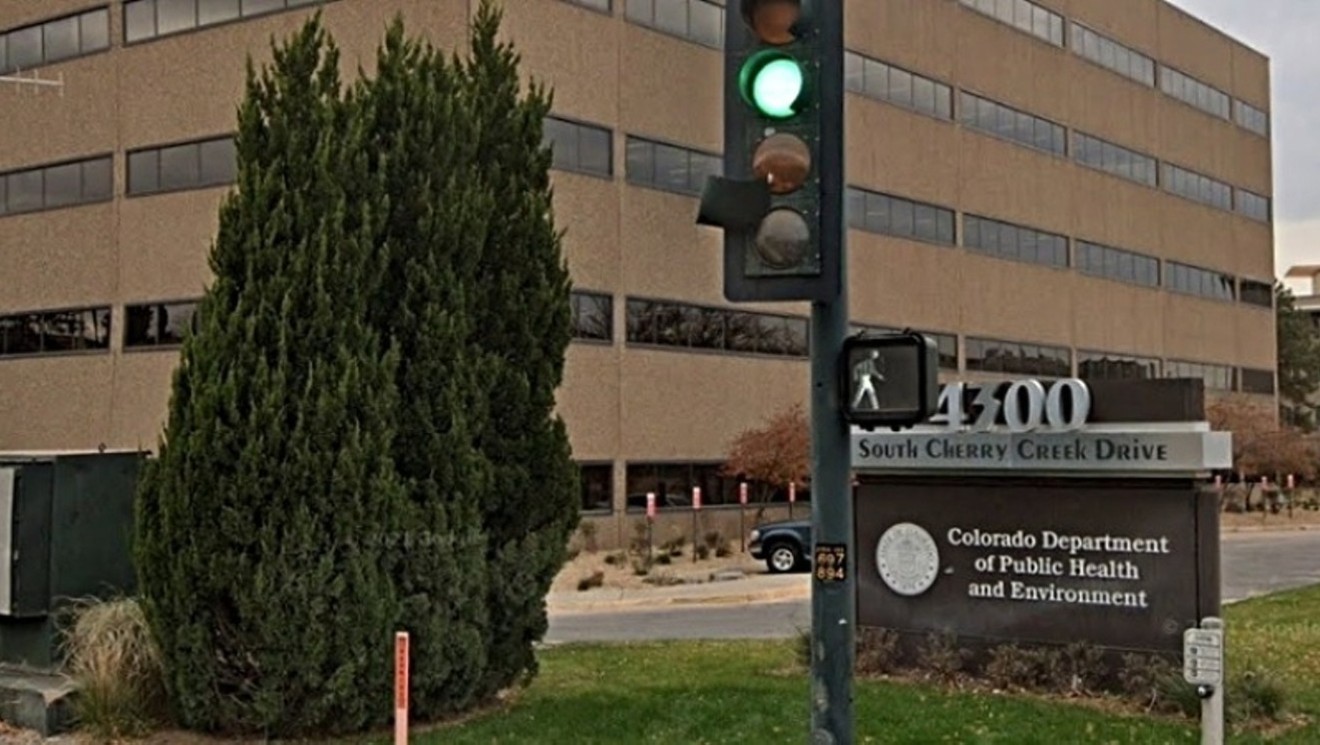
Here’s how Ginger Stringer, the epidemiology response program manager in the CDPHE’s communicable disease branch, explains the decision: “COVID-19 is going to be with us for a while. But the fact that we’re seeing fewer severe outcomes is a really good thing and helps us have more confidence in focusing our public-health resources on protecting the highest-risk individuals in the highest-risk settings,” such as nursing homes and other facilities specializing in senior care.
Stringer’s reference to “resources” suggests that the move is at least partly about money — and there’s no question that closely following COVID-19 outbreaks in a wide variety of settings has been enormously expensive. The state health department’s July 13 outbreaks roster includes 8,819 outbreaks considered resolved since the first COVID-19 survey was made public on April 15, 2020, just over a month after the first identification of the virus here. And that’s not counting the 378 outbreaks still being actively investigated — although thanks to the department’s report changes, that number has fallen substantially from the 573 active sites designated on June 29, just two weeks earlier.
Of course, COVID case counts remain higher than officials would prefer: Counts ranging from 1,000 to nearly 3,000 new daily infections have been tallied over the past week, even though the overwhelming majority of individuals who score positive readings on home tests no longer bother to inform the CDPHE of their diagnosis. In addition, the state’s positivity rate remains above 10 percent, indicating that not nearly enough of the official, and more medically accurate, tests are being done. But while Stringer acknowledges these factors, she still sees the shift in outbreaks reporting as appropriate.
Since Governor Jared Polis announced what he termed the “Roadmap to Moving Forward” in February, “we’ve been working on coordinating our public-health response with that plan — and part of that is shifting the way we’re sharing data publicly,” she says. “We’re in a much different place than we were in March of 2020 or even previous times when we were seeing this level of cases. Our case rates are still high, but thanks to the good work of Coloradans getting vaccinated, we have much lower rates of severe outcomes than during previous times of the pandemic. So we’re hoping that by making this change, we’re prioritizing information that’s most useful to the public to protect themselves.”
Another thing that’s different from two years ago, she continues, is that “we understand transmission much better. We understand that most of the transmission is happening in the community rather than in places where there’s a known outbreak. That’s why we’re focusing on the risk and prioritizing our public-health response to provide mitigation efforts to the higher-risk settings, to make sure we’re limiting those severe outcomes.”
The CDPHE has been trending in this direction for more than a year. In June 2021, the department altered the definition of outbreaks, declaring that while skilled nursing centers and the like would still receive that label if two or more infections were linked to them in a fourteen-day period, businesses, K-12 schools and most other places wouldn’t be similarly identified unless five or more cases were confirmed over the span. Then in May, the CDPHE stopped requiring businesses to report outbreaks no matter the number of cases, instead encouraging managers to contact local health authorities for assistance.
The further narrowing of outbreaks reporting is even more sweeping, as evidenced by the following rundown of CDPHE website changes:
• All active outbreak case count graphs will be removed.
• Active outbreaks by county will be removed.
• Active outbreak cases by county will be removed.
• Weekly/monthly percent of outbreaks by setting type and date outbreak began will be removed.
• The outbreak map will remain, but will only display active outbreaks in priority settings (with no outbreak details) and resolved outbreaks….
• Active outbreaks: Only outbreaks in priority settings; and only facility name, facility county, setting type, and report date.
According to Stringer, “all outbreaks are still reportable,” but that information will no longer be shared with the broader public. For instance, “schools should continue reporting clusters and outbreaks to public health agencies. But we want to treat COVID-19 reports like other respiratory infections,” in order to “allow schools to communicate with staff, students and parents about COVID-19 or another other disease that may be present. We also encourage parents to talk to their school administration to understand the current COVID-19 risk to schools and their families. And we definitely want to remind parents to make sure their students are up to date on their COVID-19 vaccines,” which are now available to children as young as six months, “and other routine childhood vaccines before going back to school.”
Testing of students will also be important, since COVID-19 and the flu often share symptoms. And Stringer says CDPHE officials will continue to meet regularly with superintendents and other administrators should the situation related to COVID-19 require a pivot down the line.
The CDPHE’s transition shouldn’t be interpreted as a message that the risk factors of COVID-19 are now equivalent to those associated with the flu; the coronavirus “still can have more severe outcomes,” Stringer says. And neither does she want anyone to think that the department has now signed on to the discredited natural immunity strategy, which holds that everyone eventually catching COVID-19 is the way to eradicate the disease. “I wouldn’t say we would just let that happen,” she cautions. “We’re prioritizing information we think will be useful to the public about how to best protect themselves and their family.”
Stay connected with us on social media platform for instant update click here to join our Twitter, & Facebook
We are now on Telegram. Click here to join our channel (@TechiUpdate) and stay updated with the latest Technology headlines.
For all the latest For Top Stories News Click Here

